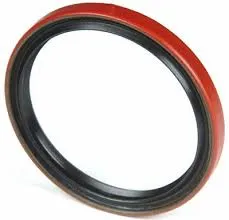10 月 . 15, 2024 13:49 Back to list
Oil Seal Production Techniques for Enhanced Durability and Performance in Industrial Applications
The Essential Guide to Oil Seal Manufacturing
Oil seals, also known as grease seals or rotary seals, play a crucial role in various mechanical systems by preventing lubricants from leaking and keeping contaminants out. They are essential components in numerous applications, including automotive, aerospace, and industrial machinery. The manufacturing process of oil seals is intricate, involving several steps to ensure that the final product meets the required standards and specifications.
Understanding Oil Seal Composition
Oil seals are typically made from elastomers, such as nitrile rubber (NBR), fluoroelastomer (FKM), silicone, and polyurethane. Each material has distinct properties, such as resistance to heat, chemicals, and wear, which makes them suitable for specific applications. The choice of material is one of the critical factors that manufacturers consider during the production process. High-quality raw materials are sourced from reputable suppliers to ensure durability and effectiveness.
Design Considerations
The design of oil seals is pivotal to their functionality and longevity. Engineers employ advanced computer-aided design (CAD) software to create precise specifications that account for factors such as pressure, temperature, and the types of fluids the seal will encounter. The design must also consider the installation requirements and the sealing mechanism. Features such as lip profile, spring design, and the overall dimensions are meticulously calculated to optimize performance.
Manufacturing Process
The manufacturing of oil seals involves several key steps, including molding, curing, and inspection
.1. Molding The manufacturing process typically begins with the mixing of raw materials to create a rubber compound. This mixture is then placed into a mold where it is shaped into the desired oil seal configuration. Depending on the design, either compression or injection molding techniques may be used. Injection molding offers more precision and can produce complex shapes, while compression molding is often more cost-effective for larger production runs.
oil seal manufacturing

2. Curing After molding, the seals undergo a curing process, also known as vulcanization, where they are heated to cross-link the rubber molecules. This step enhances the mechanical properties of the seals, making them more resilient to wear and resistant to deformation under pressure. The curing process is carefully monitored to ensure that it meets the necessary specifications for the end product.
3. Post-Processing Once cured, the oil seals may undergo secondary processes such as trimming and surface finishing. This step involves removing any excess material and ensuring that the seals have a smooth surface, which is crucial for optimal sealing performance.
4. Quality Control and Testing Rigorous quality control measures are implemented throughout the manufacturing process. This includes visual inspections and various testing methods to assess properties such as hardness, tensile strength, and temperature resistance. In some cases, seals undergo dynamic testing to simulate real-world operating conditions. Only products that meet strict quality standards are approved for distribution.
Market Trends and Future Prospects
The oil seal manufacturing industry is evolving, driven by advancements in material science and manufacturing technology. Trends such as the increasing demand for environmentally friendly materials and the growth of electric vehicles are shaping the future of oil seal production. Manufacturers are investing in research and development to create seals that can withstand higher pressures and temperatures while maintaining low friction properties.
In addition, the integration of automation and smart manufacturing technologies is enhancing production efficiency and accuracy. By utilizing robotics and real-time data analytics, manufacturers can streamline processes, reduce waste, and improve overall product quality.
Conclusion
Oil seal manufacturing is a complex yet vital process that underpins the reliability of numerous machines and vehicles. As industries continue to innovate and evolve, oil seal manufacturers must adapt to new challenges and opportunities, ensuring that their products remain effective, sustainable, and ready to meet the demands of the future. Through a combination of advanced materials, precise engineering design, and stringent quality control, the manufacturing of oil seals will continue to play a crucial role in mechanical systems worldwide.